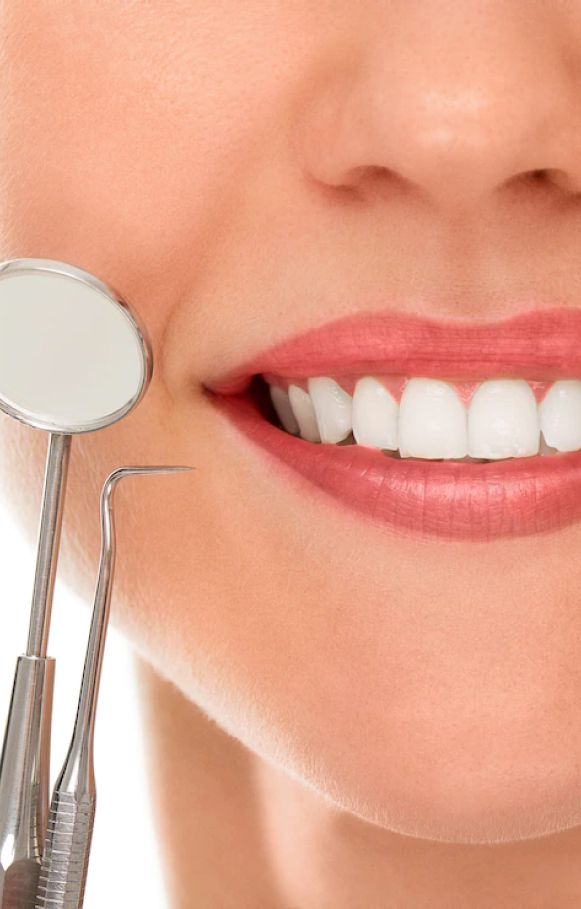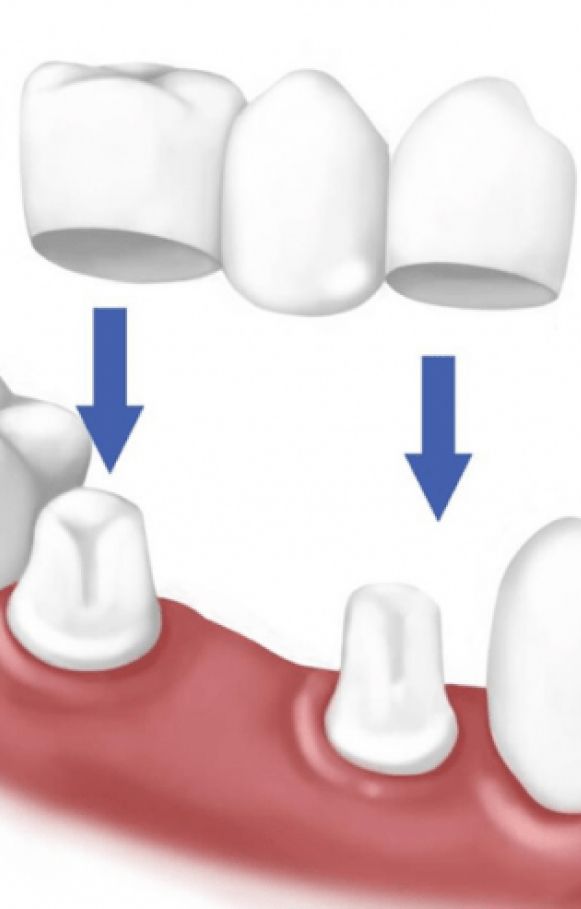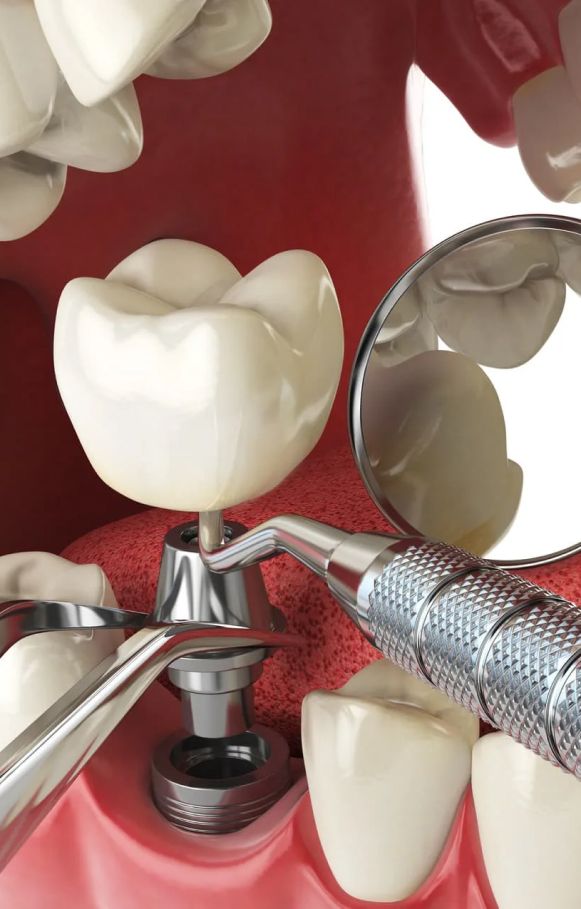Crowns Bridges Bankstown

Create The Perfect Smile
Dental crowns or bridges fit like a sleeve over your tooth to cover up a fault.
Over time our teeth begin to weaken and become more susceptible to problems such as decay, cracks, discoloration and others. If you feel your smile isn’t what it once was, crowns can help you recover your smile.
Dental Crown Bridge
A dental crown is a tooth-shaped “cap” that is placed over a tooth — to cover the tooth to restore its shape and size, strength, and improve its appearance.
If your tooth is decayed or seems weakened/cracked a crown may be necessary to make sure that there are no additional problems with the tooth. In cases like this a filling or bonding will not be sufficient.
Dental Crown and Bridges
A dental bridge may be recommended if you’re missing one or more teeth. Gaps left by missing teeth can eventually cause the remaining teeth to rotate or shift into the empty spaces, resulting in a bad bite. The imbalance caused by missing teeth can also lead to gum disease.
Bridges are cemented to the natural teeth or implants surrounding the empty space. These teeth, called abutments, serve as anchors for the bridge.
Porcelain Presents The Perfect Finish
Crowns can be made from porcelain, porcelain fused to metal, or a full gold crown. To maintain a natural look and feel a porcelain finished crown is best, as it can be matched to the shade of your other teeth. This will allow your crown to blend in and appear just like one of your natural teeth.


What Is The Process?
The process of installing a crown or bridge takes 2 visits.
On the first visit the tooth will be reshaped by filing down the enamel so that the crown can be placed over it. You will be given a local anaesthetic before this part of the procedure so that you do not experience any discomfort. Once the tooth has been reshaped, a mould will be taken of that tooth and the surrounding teeth. This mould will be sent to a dental lab so that your new crown can be made so that it fits in the spot created for it and looks the same relative to the surrounding teeth.
Before leaving, your dentist will fit you with a temporary crown until your permanent crown is ready.
The crown takes about 1 week to be returned. At this time you will have another appointment to place and fit the permanent crown. The tooth will be placed using a cement to ensure the tooth sits in place.
When you look in the mirror, you will see your old smile back. Crowns are durable and strong. You should care for it as you would any of your other teeth with regular brushing and flossing for teeth whitening.
How Long Will a Dental Crown or Bridge Last?
They can last between 5 to 15 years or even longer. It depends on your oral hygiene, dental care and maintenance.
Crowns Bridges FAQ
When it comes to comparing crowns and bridges, it’s important to consider individual dental needs and circumstances. Crowns are typically considered better in certain situations. Crowns are tooth-shaped caps that cover a damaged or weakened tooth, providing protection and restoring its appearance and functionality. They are often recommended for teeth with extensive decay, large fillings, or fractures. Crowns offer excellent durability, strength, and aesthetics. On the other hand, dental crown bridge are used to replace missing teeth by attaching artificial teeth to adjacent natural teeth or dental implants. While bridges are a suitable option for crown tooth bridge replacement, crowns provide comprehensive benefits for damaged teeth, making them a preferred choice in specific cases.
A crown bridge might cost more or less depending on a number of variables. These include the materials used, the degree of difficulty of the necessary dental work, the location where the crown and bridge dental office is located, and the dentist’s level of experience. Crown bridges dental are specialized prosthetics that replace missing teeth and offer both aesthetic and functional benefits. It’s crucial to keep in mind that the price includes not only the supplies used but also the knowledge and expertise of the dental specialist doing the treatment. To get a customized assessment and review its particular costs, it is advised to get in touch with a dentist.
A dental bridge can last for up to 30 years with proper care and maintenance. The longevity of a dental bridge depends on various factors, including oral hygiene, regular dental check-ups, and lifestyle habits. Good oral hygiene practices such as brushing and flossing daily, as well as avoiding excessive pressure on the bridge through activities like teeth grinding or chewing hard objects, can contribute to its long-term durability. Additionally, visiting the dentist regularly for professional cleanings and examinations allows for early detection of any issues that may affect the bridge’s longevity. Adhering to these practices can greatly increase the lifespan of a dental bridge.
Dental crowns made of metal are typically thought to be stronger than dental crowns made of other materials. They are renowned for their durability and capacity to bear biting and chewing pressure. Metal alloys, such as those made of gold, silver, or base metals like chromium or nickel, are frequently used to make metal crowns. These metals are a great option for posterior bridge and crown teeth that need a lot of support because of their outstanding strength and resilience. Although metal crowns may not have the same visual appeal as tooth-colored crowns, their endurance and strength make them a popular option, especially for molars and premolars.
The longevity of a dental crown can vary significantly, generally lasting between 5 to 15 years, and possibly even longer with proper care and maintenance. Factors influencing this include the material of the crown (porcelain, metal, or a combination), the health of the tooth underneath, the patient’s oral hygiene habits, and their lifestyle choices such as diet and whether they grind their teeth. Regular dental check-ups and cleanings, along with a good daily oral care routine, can help extend the life of a dental crown. Despite these precautions, the crown may eventually need to be replaced due to wear and tear or dental issues.
Getting crowns and bridges is generally not painful because the procedure is performed under local anesthesia, which numbs the area completely. Any discomfort during the procedure is minimized. The dentist prepares the teeth, takes impressions, and places a temporary crown or bridge, all while the patient is numb. After the procedure, you might experience slight soreness or sensitivity, but this usually subsides quickly. In fact, crowns and bridges often alleviate pain caused by damaged or decayed teeth. It’s important to communicate with your dentist about any discomfort so they can adjust treatment accordingly.
Crowns and bridges are dental restorations that address decayed or damaged teeth by capping or bridging gaps, using adjacent teeth as support. A crown is a cap placed over a tooth, while a bridge is used to replace one or more missing teeth by anchoring to surrounding teeth. On the other hand, dental implants replace the entire tooth structure, from the root to the crown. An implant involves a titanium post inserted into the jawbone to mimic the tooth root, providing a secure base for an artificial tooth. Unlike crowns and bridges, implants are standalone structures and don’t rely on neighboring teeth for support.
Dental checkups and good oral hygiene are both necessary for maintaining dental crowns and bridges. Use fluoridated toothpaste to brush your teeth twice daily, and floss to get rid of plaque and food bits. Remember to tidy the area beneath the bridge. Avoid foods that are hard or sticky as they can break bridges or harm crowns. Avoid eating and drinking too much sugar as it can cause tooth decay. To further defend yourself against bacteria, use mouthwash. For a professional cleaning and assessment of your crowns and bridges to make sure they are in good condition, regular dental appointments are essential.
Crowns and bridges are recommended in various situations to restore dental health and function. A crown is typically recommended when a tooth is severely damaged, decayed, or has undergone a root canal, to provide strength and protect the remaining tooth structure. Crowns are also used to improve the appearance of discolored or misshapen teeth. A bridge, on the other hand, is suggested when one or more teeth are missing. A bridge can fill the gap by anchoring onto the teeth on either side of the space, preventing shifting of teeth, preserving bite alignment, and improving chewing ability and aesthetics.
Crowns and bridges can be placed on most teeth, but not necessarily all. The tooth must be structurally sound and have sufficient healthy tooth structure to support the crown or bridge. Teeth with severe decay, damage, or those that are overly worn down may not be suitable. Additionally, for a bridge, there need to be strong teeth adjacent to the gap where the missing tooth was, as these will serve as anchors for the bridge. The patient’s overall oral health also matters; conditions like gum disease could jeopardize the success of the restoration. Always consult with a dental professional to discuss your specific case.
You can call our front desk at (02) 9790 3336 Mon – Fri 9am – 8pm, email us at enquiry@smilelinedental.com.au or fill the Contact Form
